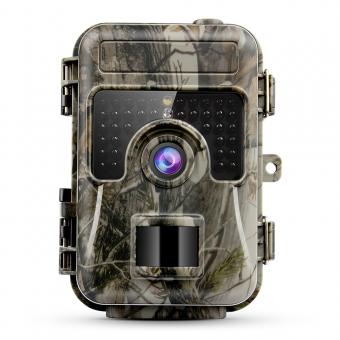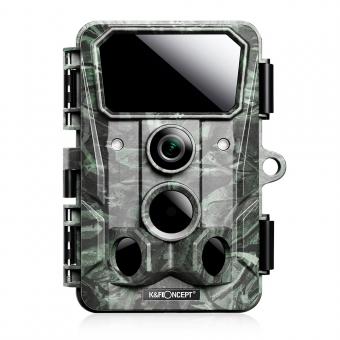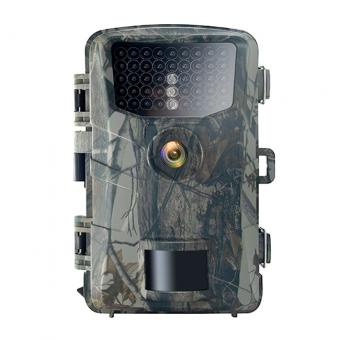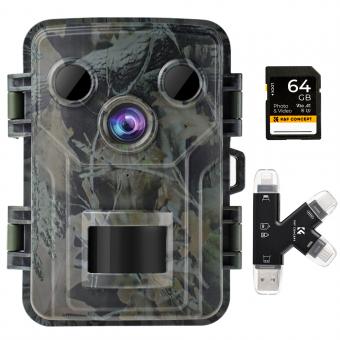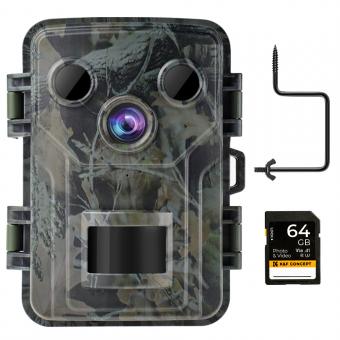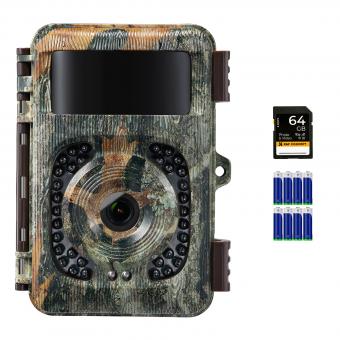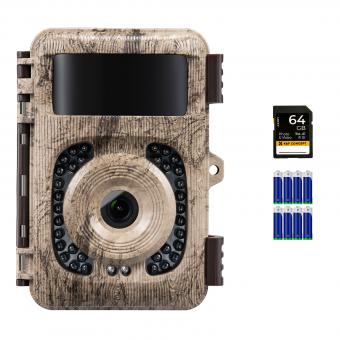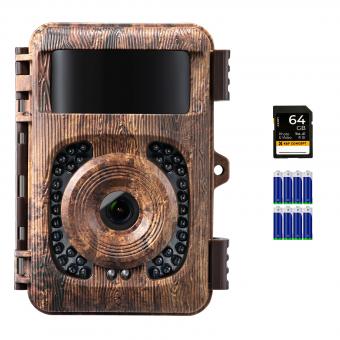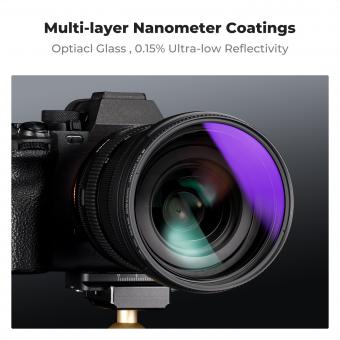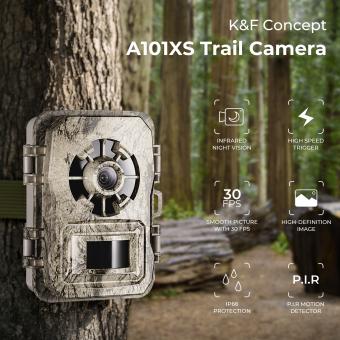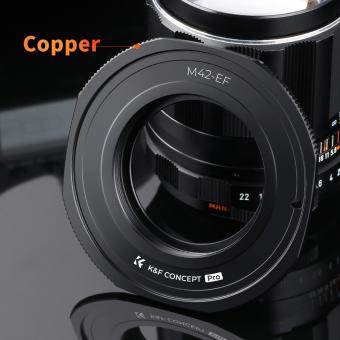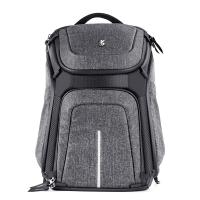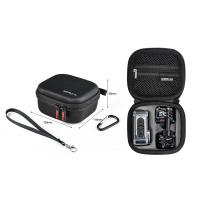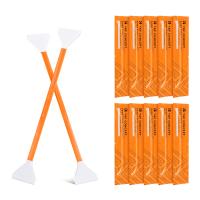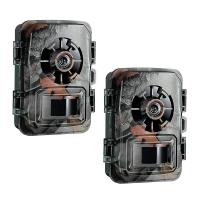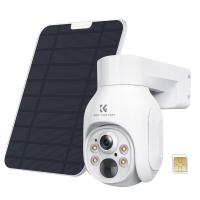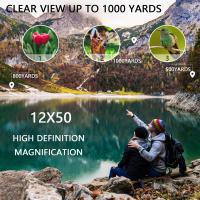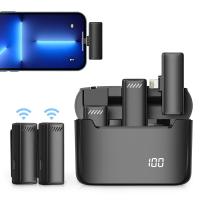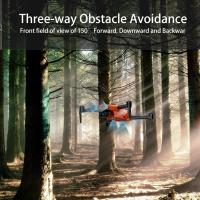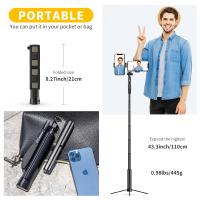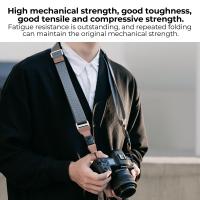Which Wildlife Camera ?
There are several different types of wildlife cameras available on the market, each with its own features and specifications. Some popular options include trail cameras, which are designed to be placed outdoors and capture images or videos of wildlife in their natural habitat. These cameras are often equipped with motion sensors and infrared technology to detect and capture animals even in low-light conditions. Another type of wildlife camera is the camera trap, which is typically used by researchers and conservationists to monitor and study wildlife populations. These cameras are often more advanced and may have features such as GPS tracking and remote access capabilities. Ultimately, the best wildlife camera for you will depend on your specific needs and budget. It's important to consider factors such as image quality, battery life, durability, and ease of use when choosing a wildlife camera.
1、 Types of wildlife cameras and their features
Which wildlife camera you choose depends on your specific needs and preferences. There are several types of wildlife cameras available, each with its own features and capabilities.
1. Trail Cameras: These are the most common type of wildlife cameras. They are designed to be durable and weatherproof, making them suitable for outdoor use. Trail cameras are typically motion-activated and can capture high-resolution images and videos. They often have infrared technology for night vision and can be set up to take photos at specific intervals.
2. Wireless Cameras: These cameras use Wi-Fi or cellular networks to transmit images and videos to your smartphone or computer. They offer the convenience of remote monitoring and real-time notifications. Wireless cameras are ideal for those who want to keep an eye on their property or wildlife from a distance.
3. Time-Lapse Cameras: These cameras are designed to capture images at set intervals over an extended period. They are great for capturing long-term changes in wildlife behavior or habitat. Time-lapse cameras often have a wide field of view and can be set up to take photos at specific times of the day.
4. 360-Degree Cameras: These cameras capture a full 360-degree view of the surroundings. They are ideal for capturing panoramic shots of wildlife or for immersive virtual reality experiences. 360-degree cameras often have high-resolution sensors and can record videos in 4K or even 8K resolution.
The latest trend in wildlife cameras is the integration of artificial intelligence (AI) technology. Some cameras now have AI-powered features such as animal recognition, which can automatically identify and categorize different species. This can be particularly useful for researchers or conservationists who need to track specific wildlife populations.
In conclusion, the choice of wildlife camera depends on your specific requirements. Consider factors such as image quality, durability, wireless capabilities, and any additional features like AI integration.
2、 Best wildlife cameras for capturing high-quality images
When it comes to capturing high-quality images of wildlife, there are several excellent camera options available on the market. However, determining the best wildlife camera depends on various factors such as budget, desired features, and personal preferences.
One popular choice among wildlife photographers is the Canon EOS-1D X Mark III. This camera boasts a 20.1-megapixel full-frame sensor, exceptional autofocus capabilities, and impressive low-light performance. It also offers high-speed continuous shooting, making it ideal for capturing fast-moving wildlife.
Another top contender is the Nikon D850. With its 45.7-megapixel sensor, this camera delivers stunning image quality and exceptional dynamic range. It also offers a robust autofocus system and a durable build, making it suitable for outdoor wildlife photography.
For those looking for a more compact option, the Sony Alpha a9 II is worth considering. This mirrorless camera features a 24.2-megapixel sensor, lightning-fast autofocus, and impressive burst shooting capabilities. Its silent shooting mode is particularly useful for wildlife photography, as it minimizes disturbance to the animals.
In recent years, mirrorless cameras have gained popularity in the wildlife photography community due to their lightweight design and advanced features. The Sony Alpha a7R IV, for example, offers a whopping 61-megapixel sensor, excellent autofocus, and 10 frames per second continuous shooting. It also has a high-resolution electronic viewfinder, allowing photographers to preview their shots in real-time.
Ultimately, the best wildlife camera depends on individual needs and preferences. It is essential to consider factors such as image quality, autofocus performance, durability, and portability when making a decision. Additionally, staying up to date with the latest camera releases and advancements in technology can help ensure you make an informed choice.
3、 Factors to consider when choosing a wildlife camera
Factors to consider when choosing a wildlife camera:
1. Image quality: One of the most important factors to consider when choosing a wildlife camera is the image quality it produces. Look for a camera with a high resolution and good low-light performance to capture clear and detailed images of wildlife.
2. Trigger speed: Wildlife can be fast-moving, so a camera with a fast trigger speed is essential to capture those fleeting moments. Look for a camera with a trigger speed of less than one second to ensure you don't miss any action.
3. Battery life: Wildlife cameras are often placed in remote locations for extended periods, so it's important to choose one with a long battery life. Look for cameras with efficient power management systems and consider using external power sources for longer deployments.
4. Durability: Wildlife cameras need to withstand harsh weather conditions and potential encounters with animals. Look for cameras that are weatherproof and have a sturdy construction to ensure they can withstand the elements and any accidental knocks.
5. Detection range: The detection range of a wildlife camera determines how far away it can detect motion and trigger the camera. Consider the specific area you want to monitor and choose a camera with a detection range that suits your needs.
6. Wireless connectivity: Some wildlife cameras offer wireless connectivity options, allowing you to remotely access and control the camera. This can be particularly useful for monitoring camera traps in real-time or adjusting settings without disturbing the wildlife.
7. Storage capacity: Wildlife cameras capture a large number of images and videos, so it's important to choose one with sufficient storage capacity. Look for cameras that support large memory cards or have built-in storage options.
8. Price: Wildlife cameras can vary greatly in price, so it's important to consider your budget. However, it's also important to balance price with the desired features and quality to ensure you get a camera that meets your needs.
In addition to these factors, it's worth considering the latest advancements in wildlife camera technology. For example, some cameras now offer advanced motion sensors and artificial intelligence capabilities, allowing for more accurate wildlife detection and reducing false triggers. Others may have improved connectivity options, such as 4G or GPS, enabling better remote monitoring and tracking of wildlife. Keeping up with the latest developments in wildlife camera technology can help you make an informed decision and choose a camera that best suits your specific requirements.
4、 Wildlife camera placement and positioning techniques
When it comes to wildlife camera placement and positioning techniques, the choice of camera plays a crucial role in capturing high-quality images and videos of wildlife. There are several factors to consider when selecting a wildlife camera, including image quality, battery life, durability, and ease of use.
One popular option is the trail camera, which is specifically designed for outdoor use and wildlife monitoring. These cameras are typically weatherproof and have long battery life, allowing them to be left unattended for extended periods. They are often equipped with motion sensors and infrared technology to capture images or videos when animals are detected.
Another option is the DSLR camera, which offers superior image quality and versatility. DSLR cameras allow for interchangeable lenses, enabling photographers to capture wildlife from a distance or in close-up detail. However, they require more manual operation and are not as weatherproof as trail cameras.
In recent years, there has been a rise in the use of camera traps, which are essentially motion-activated cameras that can be placed in various locations to capture wildlife activity. These cameras are often compact, lightweight, and easy to set up. They can be placed on trees, posts, or even hidden in the ground to capture animals from different angles.
Ultimately, the choice of wildlife camera depends on the specific needs and preferences of the photographer or researcher. It is important to consider factors such as budget, intended use, and the environment in which the camera will be placed. Staying up to date with the latest advancements in camera technology can also help in making an informed decision.

